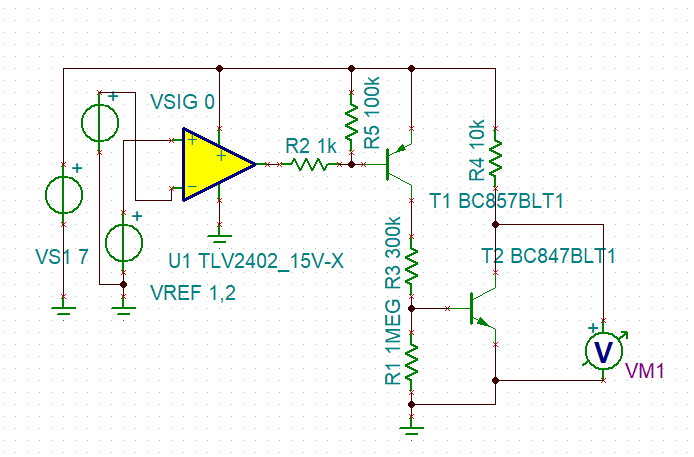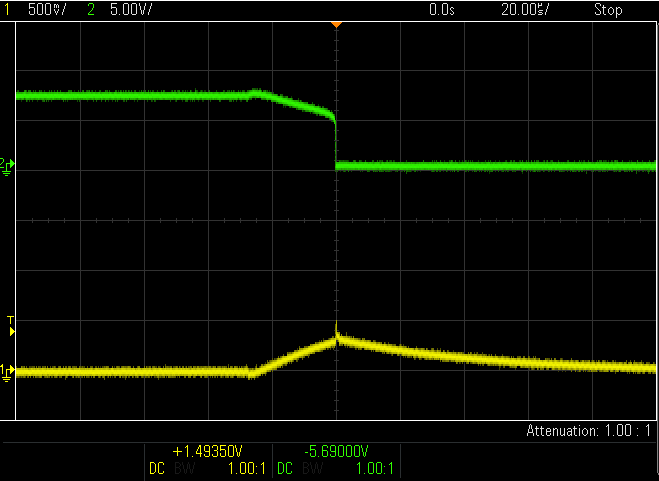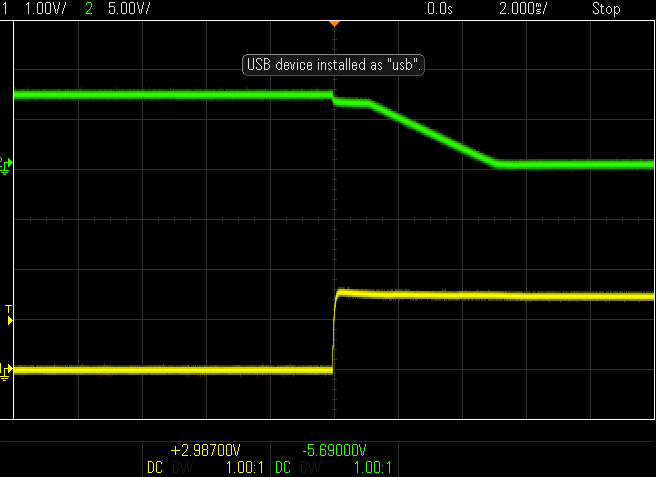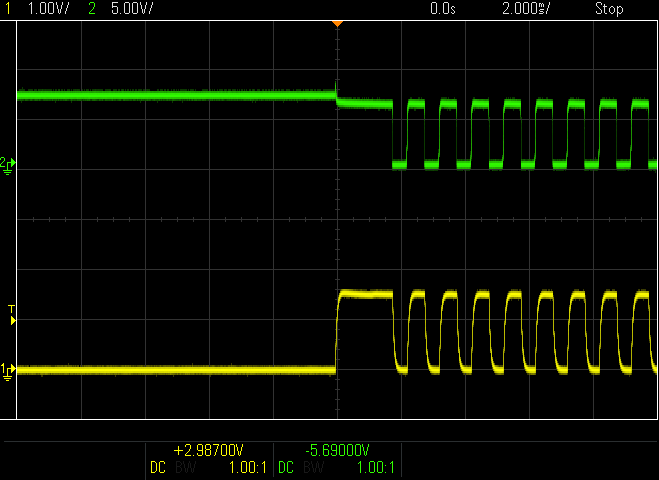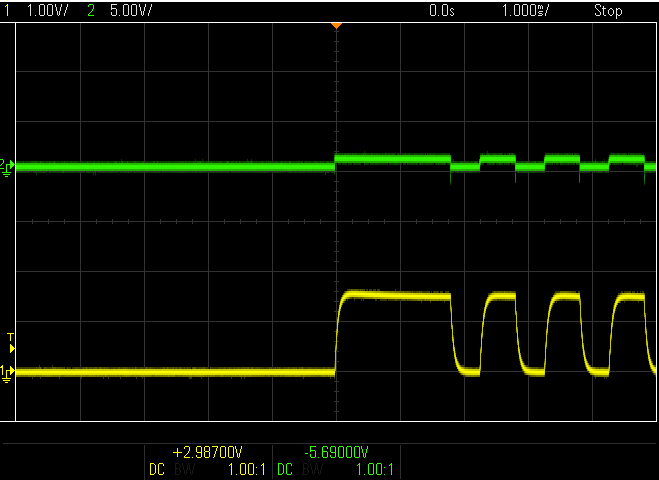Other Parts Discussed in Thread: TLV2401, TLV3702
Dear Forum Members,
I started to evaluate a TLV2402 device and I get better results then it was expected referring to the slow rate.
In my configuration initially the 2402 output is at H level and driving a PNP transistor trough a 1KOhm (emitter connected to VDD). When certain event occures its output goes down to L adding base current to the PNP for opening whose collector rise to ~VDD.
Accoring to the datasheet SR=0,0025V/us, thus I would expect about 0,6V/SR=240us delay (PNP base potential should be below its emitter (VDD) pot. by 0,6V) but I measured only 28us by a two-channel scope in single mode.
You may have some idea why is this huge difference. Maybe the '2402 has asymetric response time when operated in comparator mode and the L->H transition at its output takes much more time?
Thanks in advance!
BR,
Jospech


